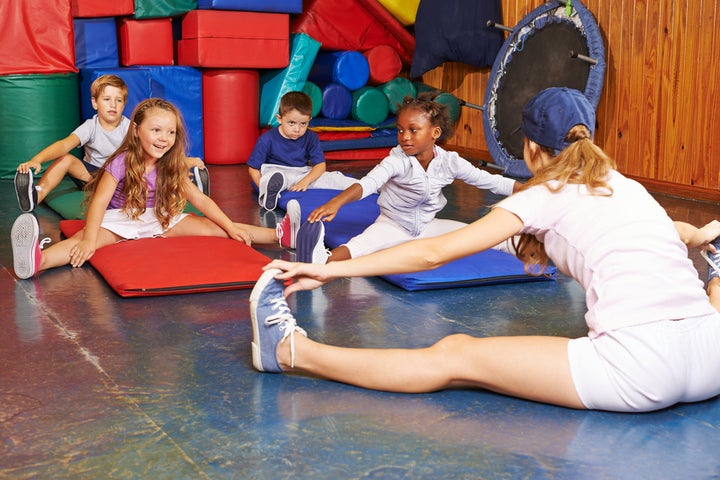
I tell my children all the time that I plan to live to 100 -- at least.
My longevity plan doesn’t include the knowledge I gained in middle school math or high school English. Rather, my plan to live a long, healthy life has to do with how physically literate I am.
With the first anniversary this week (December 10) of the signing of our country's new education plan -- the Every Student Succeeds Act (ESSA) – I started thinking about my plans to reach my centennial birthday and the active lifestyle I fashioned for my children.
My life plan depends largely on my physical literacy. One of the earliest mentions of the term in academic journals was in 1938, but it appears its time has finally come. The term has been underscored by myriad groups, from the Aspen Institute in its 2013 strategic plan, Physical Literacy in the United States, to SHAPE America, the Society for Health and Physical Educators, which sets the national standards for K-12 physical education. It also has been embraced by the Centers for Disease Control and Prevention (CDC – the “nation’s health protection agency”). The CDC does not mention math competency or the ability to read and write, but wholeheartedly endorses the importance of physical literacy, stating that “only a few lifestyle choices have as large an impact on your health as physical activity.”
That’s why I swim for an hour, three to four days a week. All pools in Washington, D.C., where I live, are free to DC residents. On the other days, I run on an elliptical and add a rotation of weights.
With ESSA, "our legislators have finally put ‘physical literacy’ on par with math literacy and health literacy,” says Paul Roetert, Ph.D., CEO of SHAPE America. “Through physical education classes, we have a framework for producing physically literate individuals."
Physical education (PE) develops physical competence so that all children can move efficiently, effectively, and safely, and understand what they are doing. The outcome, physical literacy, is an essential basis for children’s full development.
A year ago, President Obama signed ESSA into law, replacing the controversial No Child Left Behind Act of 2002. When ESSA kicks into gear in schools at the beginning of the 2017-2018 academic year, educators will focus on the “whole child,” which includes “school health and physical education as part of a student’s ‘well-rounded education,’ along with other subjects such as art, music, civics, science and more,” says Roetert – which is something No Child Left Behind left out. “With implementation of ESSA, a new generation of students will understand that physical education and health are part of a well-rounded education.”
Under ESSA, funding allocations are decided by states and school districts. So on this anniversary, parents should reach out to their school systems in support of robust health and PE programs to be implemented next August. And, since today's PE is not what our parents and grandparents experienced, think out of the box – yoga, rock climbing, fly-fishing, personalized fitness training – because 21st century PE is about teaching the skills needed to be physically active for life. More than that, it’s also about building character, combating bullying, playing fair, improving self-esteem, reducing bad behaviors, and enhancing peer interactions.
For example, at Washington State’s Tahoma High School, students can choose an “outdoor academy” class that marries three disparate subjects – PE, literature, and environmental science. Students read A River Runs Through It for their English class, learn trout fishing during PE, and study the ecology of water systems in science. A physical education teacher in Miami-Dade Public Schools has had remarkable success teaching kayaking and sailing to students who have disabilities. This innovative thinking is transforming the concept of PE.
Please don’t get me wrong. All the other classes provide a critical foundation for success, shaping our ability to get and keep jobs and helping us identify our interests and careers. But what I love on this anniversary of the signing of ESSA is that this act equalizes physical education with other curriculums. It finally mainstreams the fact that moving enhances learning.
Scientists have long known that people who regularly exercise have brains that look different – healthier – from their sedentary counterparts. “Physical activity stimulates various brain chemicals that may leave you feeling happier and more relaxed,” writes the Mayo Clinic. And the CDC points out, “Physical literacy is a life extender, “increas[ing] your chances of living longer. People who are physically active for about seven hours a week have a 40-percent lower risk of dying early than those who are active for less than 30-minutes a week.”
“For years, schools have cut down on breaks to squeeze in more classroom time, believing it improves academic performance,” says Brett Blanchard, principal at Fair Haven Union High School in Fair Haven, Vermont, and a board member of the National Association of Secondary School Principals. “We’ve learned that the opposite is true. Adding physical activity to a child’s day can radically transform students’ academic performance and test scores.”
In my own city of Washington, D.C., all public school second-graders learn to ride bicycles during PE class, mastering a skill they will use throughout their lives. As Albert Einstein observed, “Life is like riding a bicycle. To keep your balance, you must keep moving.”
